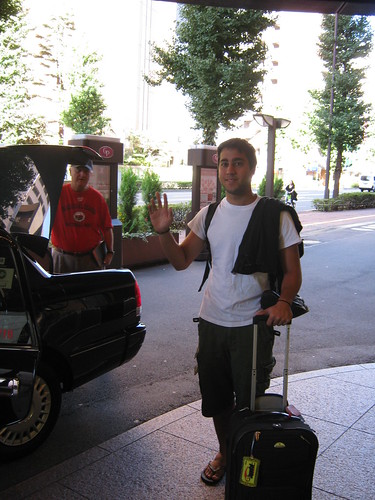
The day opened with some sadness. David, who had already missed a week’s worth of school, had to finally head home. In fact, most of the tour was going home unless they paid to go to Tokyo Disney Sea or had other plans in Japan to attend to and once that was done, we’d be down to eight, including myself, who were going on to see the rest of the teams of Japan.
My morning was dominated by a briefing for the rest of the tour, since Bob and Mayumi would not be accompanying the final eight on the rest of the tour. After we were fully briefed on the intricacies and tricky finer points of the trip, it was time for me to head back to the room and help Dave prepare to go home.
After seeing David off and wondering how the rest of the tour would be when pared down to so few, I decided to grab some chow for lunch at a Go! Go! Curry! we spotted the day before after karaoke. I’ve never mentioned it on the blog before, but Go! Go! Curry! is one of the few Japanese curry shop branches in the States and the only one I know of on the east coast (there’s a location in New York City) and I’ve had curry there once, so I was eager to compare.
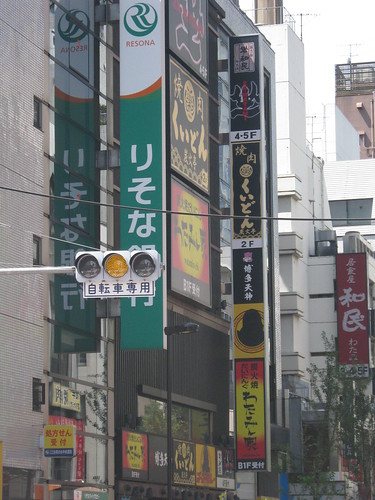
Just like the GGC in America, the restaurant was decorated with Yankees paraphernalia, mostly centered around Hideki Matsui (his player number is 55, the Japanese word for 5 is go, you do the rest). Just like the curry place at Meiji Jingu, GGC had one of those sweet curry ordering machines, so I put in an order of tonkatsu curry (CURRY! The official food of Dan’s JapanBall trip to Japan!) and scarfed it down before heading back to the hotel.
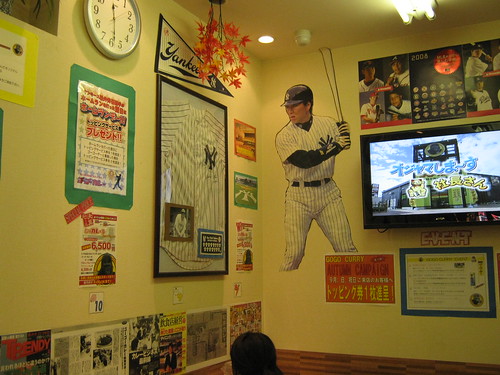
Once I’d returned to the lobby, I ran into Leon, who I learned hurt his leg at some point earlier on the trip. Although he paid money to go to Tokyo Disney Sea, he realized that he wouldn’t be able to manage wandering around a theme park and being on his feet all day, so he offered me his ticket for free. Since I didn’t really have anything on the agenda besides running errands, uploading pictures, and writing, I took him up on his offer and…had to check out and check back in, since no longer needed a double. After I did that, it was off to Tokyo Disney Sea!
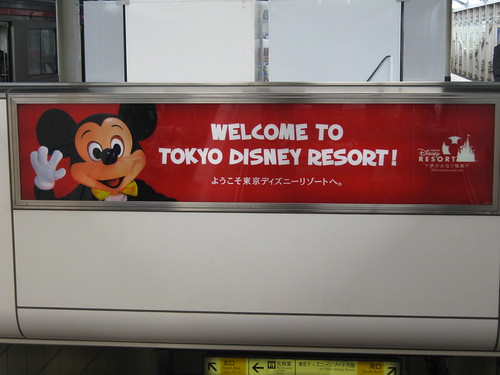
…but first we must digress into an educational treatise on the Japanese rail system.
On this blog I have lauded the Japanese rail system for its punctuality, ubiquity, and general usefulness. It’s time to scale back on the praise parade. You see, the Japanese rail system is marred by what I’m calling overcomplexity.
Let me illustrate my point with a look at the New York City subway system. Within NYC there exists the MTA that runs the subways, the buses in the city, and the regional rail lines that all lead to the city. One entity runs all of this. Subway fare is not transferable to regional rail tickets nor is it transferable to bus fare, but the same subway card will allow you to ride any subway in New York City. Best of all, your trips are all a flat rate. You can swipe the card once and ride the train all the way to the furthest reaches of the city and it would cost the same as taking the subway one stop over. It’s simple, assuming you can decipher the railway maps which are, admittedly complicated, and the stops don’t help to indicate which way the train is going.
On that last point, the Japanese trains seem to be pulling ahead. They clearly indicate, based on platform, what the next stop is and all the trains have easy-to-understand railway maps that clearly express what stops the train will be making. It’s all downhill from there.
I’ve already mentioned that certain teams have their own rail lines that lead to their respective ballparks, but I don’t think that fully captures the extent of how confusing Tokyo’s rail system can get. When you include the Greater Tokyo area, you’ve got a total of 30 operators (realistically only about four or so within Tokyo itself) each with their own set of rail lines that have stops peppered throughout Japan. Compare this with the one operator in NYC and it starts to make sense just how confusing this can get. By our hotel there is a stop for the Tokyo Metro and a stop for the JR Railway. These are two, ostensibly competing, companies each operating their own lines that sometimes stop in the exact same stations throughout Tokyo. Lucky for us, the largest provider is the East Japan Railway Company, known in the vernacular as JR, and we picked up JR rail passes that allowed us, as tourists, unlimited access to all railways (and even that ferry in Miyajima!) and shinkansen that they operated throughout Japan, but it still presents needless complication in getting around the city. On the day that Dave and I went to the Square Enix store, we rode trains run by three different companies. Each time we switched, we had to buy completely new tickets from non-standard machines.
While we’re on the subject of tickets, as I’ve mentioned before, the Japanese rail system works something like the DC Metro in that you’re required to pay for how far you went on the train. That’s no problem on maps that feature English to let you know what the Kanji translates to, but some are far enough out of the way or not considered touristy-enough to not offer any English guidance at all before buying a fare. It can get confusing and difficult rather quickly.
As I’ve mentioned before, Japan is a small enough country, geographic area-wise, that there is a uniformity in the train paradigm that covers the entire island. Every rail system, no matter where it is, operates along these lines.
With that, we’re ready to dive back into our Disney narrative.
Since I was completely on my own when I was at the ballpark, I took some video and recorded some commentary within the video that I may or may not repeat within the text. Enjoy!
After making my way through the unbelievably large Tokyo Station to get to the train that would take me to Tokyo Disney Sea (hereafter called TDS), I finally arrived at the proper station and was greeted by Disney music and the kind of perfectly-crafted space that Disney is so famous for producing for its theme parks. To my right was the route to Tokyo Disney and to the left was TDS, or so it seemed. I wandered around lost for ten minutes, eventually entering the stores they had conveniently set up to trap tourists, until I realized that I had to take a shuttle to TDS, just like in Walt Disney World.

I was quickly thrown for a loop when it seemed that Western designers had failed to properly accommodate their Eastern patrons. By now I had become accustomed to the British-minded pedestrian patterns of Japan (which reflect their driving patterns). Since I should be on the left, the escalator I want to take is, nine times out of ten, on the left. At TDS, I was struck with confusion when I saw that the up escalator was on the right. It seemed that Disney’s attention to detail overlooked this small fact, but that’s ok, I had a monorail to catch.
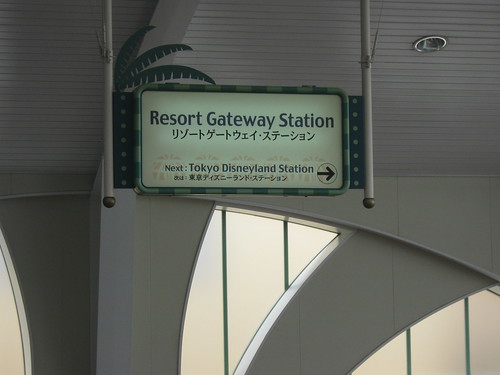
I arrived at the station, it was time to board, except for one obstruction. Remember what I said earlier?
Every rail system, no matter where it is, operates along these lines.
I wasn’t kidding. The Tokyo Disney Resort Shuttle requires passengers to buy a ticket to board. Not only that, but despite the fact that the train travels in one direction and the fee is flat no matter where you go (¥250 per trip, which, if you’ve done your math right, means I’m out another ¥500), you have to insert your ticket at the entrance and at the exit, just like every other train in Japan. This is beyond asinine and stupid. This is the kind of nickel and dime-ing that I would expect in America. This is Tokyo Disney, a park built by Americans in Japan.
My ire over having to pay to ride the tram to TDS was softened by the amazing thoughtfulness of the train itself. The handholds were shaped like Mickey Mouse heads. I would hear about how great these were from Nora and Jill for the rest of the time they were on the tour.

As you’ve seen in a previous picture, the windows were mouse-shaped too.
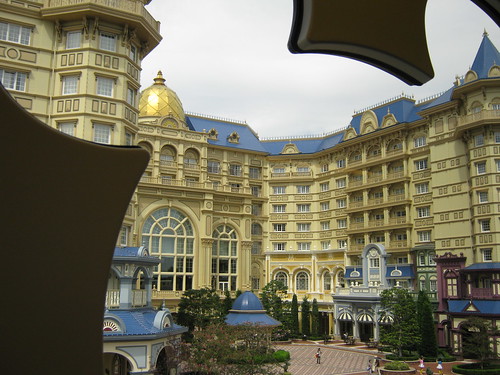
I rode the train, which only went one direction (I can’t complain about this enough) for two stops to get to TDS, which would have only been one stop going the other way. Come on Disney, I paid ¥250 for this ticket! Make it go where I want!
While on the train (and immediately after disembarking) I began to notice that, despite it being early September, it was clearly Halloween season at TDS. Some of the Japanese, who go everywhere fully equipped, were carrying whole bags of Disney paraphernalia to put on before entering the park. Mouse ears, Daisy costumes, even Disney-themed face masks were in full force before I entered the park. I suddenly remembered that I knew that Jack Skellington and The Nightmare Before Christmas were super popular out here in Japan. It was only natural that the park would be making a big deal about Halloween.
TDS is centered around exploration, most notably exploration at sea, but not exclusively, which is why it’s not, as I presumed, a water park. The opening area is Mediterranean-themed and tries to reference Venice, Italy in its architecture, which would reinforce the Sea part of TDS, but, as we’ll see later, there’s an Arabian/Agrabah/Aladdin-themed area, which is the exact opposite of the sea, so go adventure!
Early on in the park I came across a strange sight: a group of three gaijin (“foreigner”) performers putting on a show. They all spoke heavily accented Japanese and seemed to be making a point of doing so and acting ridiculous. It wasn’t offensive or anything, it was just strange to see Americans (or Europeans or Australians, I don’t really know) putting on a show here in Japan in TDS in Japanese. Sorry I didn’t tape more.
Right near the performers I spotted a McDuck Department Store, so I had to enter (I LOVE Duck Tales). I was not at all prepared for what I saw inside.
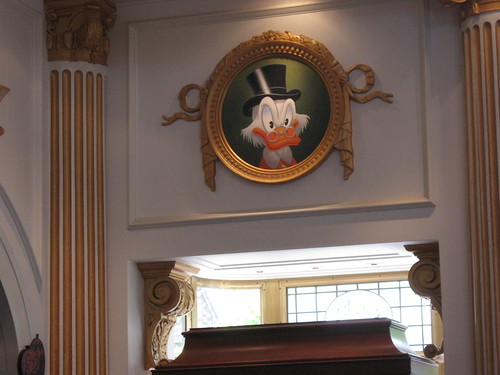
The place was packed to the gills with people and all the shelves seemed to feature only one character. Upon closer examination, all of those characters were one I didn’t even recognize. I picked one up to investigate and saw that it was Duffy the Disney Bear.
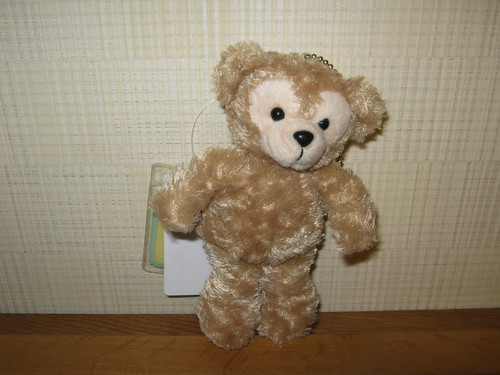
Never heard of Duffy? Neither had I. A cursory Internet investigation turned up evidence that this little fellow was a failed experiment in Walt Disney World as The Disney Bear in 2004ish (in that he failed to catch on), so they rebranded him as Duffy the Disney Bear, a teddy bear given to Mickey by Minnie to keep him company when out to sea. My investigation also points to him debuting sometime in 2006. Each month they release new clothes for the bear and the Japanese have “gotta catch ’em all!“, so they flock to the Duffy-dedicated store to get the latest fashions.
I’m not kidding when I say these were flying off the shelves. Employees streamed out of back rooms every five to ten minutes to restock the rapidly depleting shelves. They were that popular. You think the line for Mickey is long? The line for Duffy is supposedly the longest at TDS.
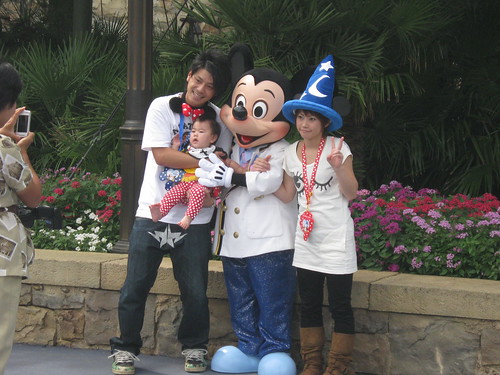
Since I’m part of the problem (really because I have a friend whose last name is Duffy), I found myself queuing to buy the above-pictured mini-Duffy in one of the four long queues that wrapped around the middle of the shop. As I stood in line I quickly realized that I stood in the wrong line. The couple in front of me had baskets full of mini-Duffys, arms full of regular-sized Duffys, and another basket filled with this month’s outfit, a pumpkin costume for the bear. This was going to be a long wait. When all was said and done, the couple in front of me (older folks, mind you) had spent ¥68700 on Duffy merchandise. To put that in American perspective, that couple spent, based on today’s exchange rate (which is close to the one I got in Japan), $767. It boggles the mind.
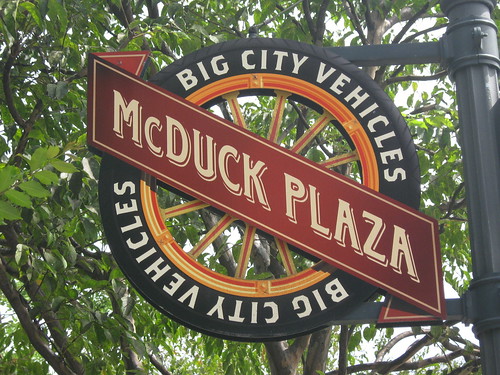
I continued exploring the park and saw that they transitioned from Venice to a more American riverboat feel. In that area was another character more popular in Japan than the states, Stitch. A good choice to express that Halloween vibe they love so much, Stitch is the character most commonly seen, outside of Mickey and Minnie, on baseball team merchandise outside of the Disney area. From the riverboat area, we transition to a Cape Cod-type area.
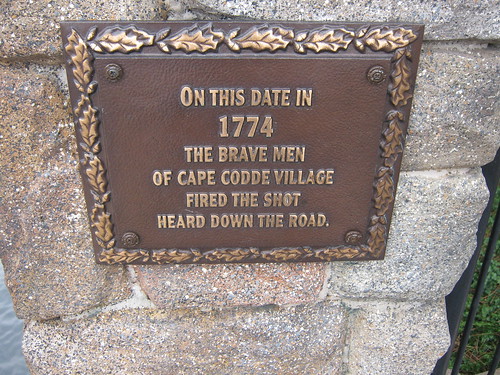
As I traveled through the Cape Cod area, I noticed something that, if it ever existed in Disney, certainly hasn’t in years. Smoking areas. If you recall (if I’ve mentioned it), it’s illegal to smoke while walking around Tokyo and other areas. You’re now confined to smoking areas until they further marginalize smokers like in America.
In Cape Cod I started to notice some of the subtler differences, like the menu. I’m pretty sure I’m wrong about what I think sets are in the video, because when I’ve seen sets in contexts after TDS, it was used to denote a combo meal. (BONUS: There’s a Duffy portrait near the dessert menu)
The Cape Cod area also had some shows, but I quickly moved on to some of the other areas and left the lighthouses behind.
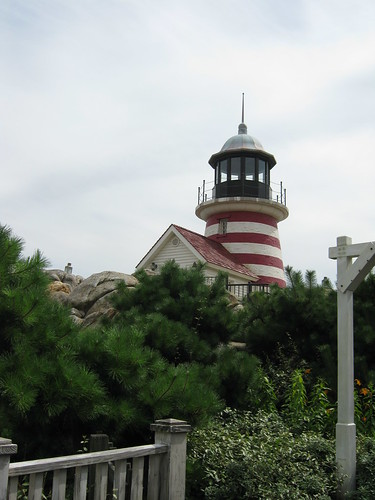
It was time to encounter my first ride. Now, I’ll have to admit, I wasn’t expecting the grand roller coasters of Universal Studios or anything, but this seemed to be a bit tame, even by Disney standards.
To be totally honest, I didn’t really ride anything at TDS partly because nothing called out to me and partly because I was there by myself. For those who would be interested in riding stuff, rest assured that Fast Passes do exist in Japan too!
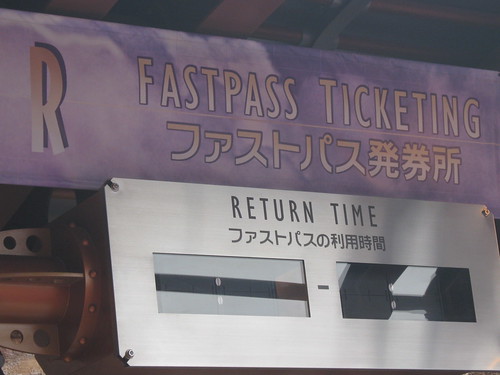
Along the way I saw a Mexican/South American area where they had an Indiana Jones stage show (like in MGM) and eventually reached the aforementioned Aladdin-themed Agrabah area. I knew I was there because there was a curry popcorn stand right outside.
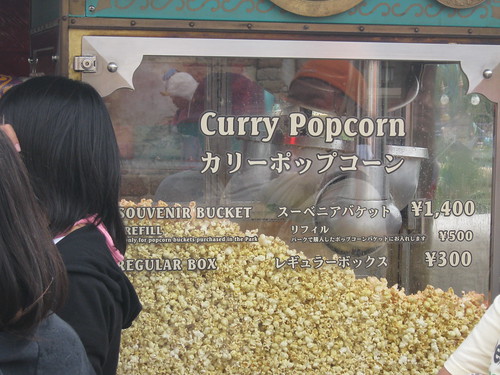
The Agrabah area was pretty cool. It had shows and shops that sold Disney-themed curry.
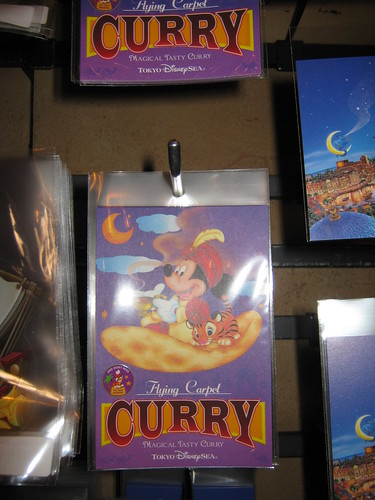
They also piped in some Arabic-themed music from Aladdin.
The next area was called Mysterious Island and it had a very steampunk feel to it, probably inspired by 20,000 Leagues Under the Sea and the Disney Atlantis movie. It was the coolest looking area of the park (to an engineering-type like myself) and I’m pretty sure that their 20,000 Leagues Under the Sea (under repair that day) was the very same one that was nixed from Walt Disney World back in 1994.
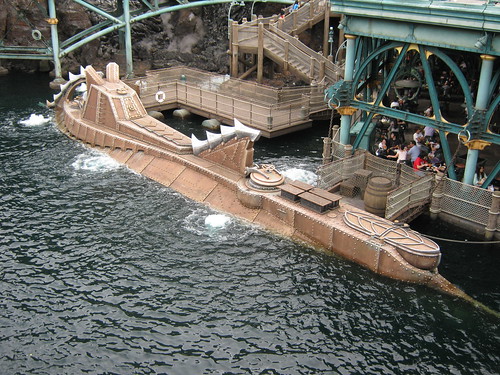
Despite a lack of evidence on Wikipedia (hardly the most exhaustive search option available) to confirm my supposition, I’m almost sure that this is true of at least some of the parts from the ride, if not all of them.
With that I had explored most of the park and seen what I wanted to see. It was time to head out, but not before going to the major gift shop where I spotted tons of souvenirs catering exclusively to the Japanese crowd among the more traditional stuff. The collectors of Japan would love all the pins and stamps that are often limited editions. The hypochondriac or infirmed would love the character-themed face masks.
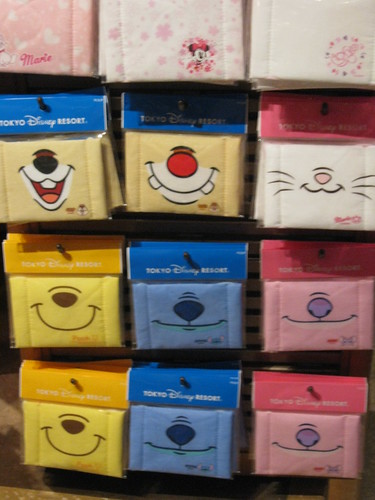
I was skeptical of what TDS would offer me before I showed up, but I was pleasantly surprised. The park exudes that Disney aesthetic that the company does so well and I found myself charmed by the park despite the hardened heart I carried in. Perhaps I’d visit with friends one day and give it a real chance.
After that it was back to the Tokyo Dome to try and get some better shots of the building that I missed on the first day and then to Akihabara to catch up on some souvenir and personal shopping.
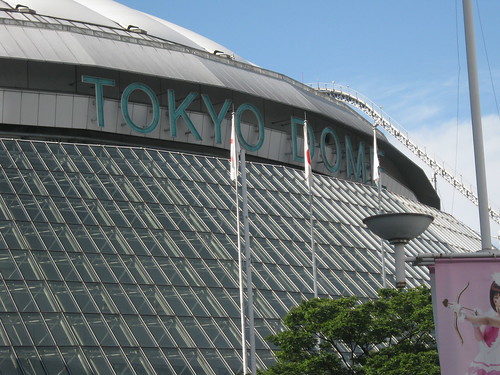
I returned to the hotel, grabbed a quiet, solo dinner at a nearby convenience store (instant noodles), and turned in for the night. The laundry that I spent way too much money to get done by the hotel staff was in my room. An episode of Naruto Shippuden came on, reminding me that Dave was gone for the rest of my trip.
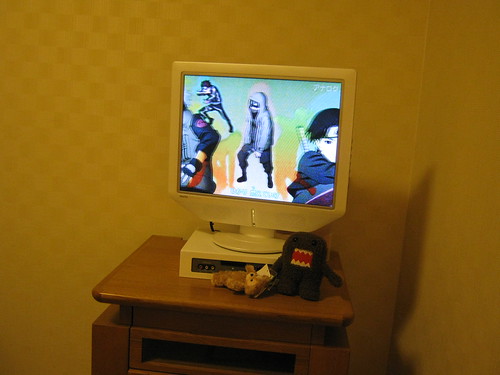
It was time to repack and get ready to embark on the rest of the journey without my travel companion. I had a good time traveling with Dave and it was already a bummer not to have him with me as I wandered around Tokyo and the rest of Japan.
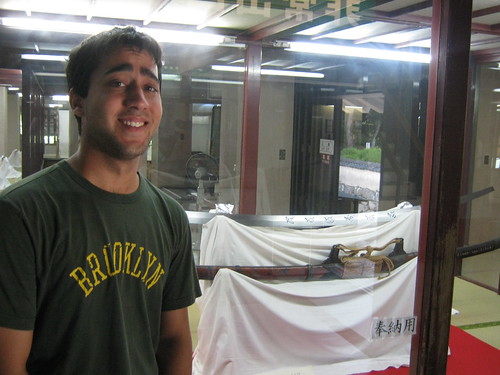
Leave a Reply